Night Visitors, part 1.
A Melitown Halloween tale
Several years earlier
A small hooded figure sits between the rungs of the staircase banister, twitching a skeletal foot as if it were a cat’s tail. Below is the desk of Michelle Marin, age twelve, occupied with a history text and a bowl of dry cereal. The hooded figure leans forward a bit—noticing an illustration of a snake chopped into pieces in her book—before settling back to lean against the rung after she turns the page. It waits. The girl reads. It continues waiting. Eventually, the girl scribbles some notes, zips her books into her backpack, and, switching off the task light, heads upstairs.
Creaking to a stand, the skeleton catches the cuff of her jeans as she thumps up the stairs, hitching a ride up to her bedroom. This is the longest it has had to wait for Michelle, it thinks and sighs. Another client aging out of the program.
***
Against the orange glow of the streetlamp divided by Avery Merlo’s window panes, the silhouette of a rabbit sits upright on its hind legs, sniffs in the direction of the boy’s bed, and concentrates. Smelling the right stage of early sleep, it leaps from the sill to the nightstand and cringes as the six-year-old turns over. Wiping its brow with a paw, it knocks its myrtle wreath askew and corrects it with the wiggle of an ear.
At quarter past 10, there are soft footsteps in the hall. The rabbit leans backward, avoiding the wedge of light the soundless door draws across Avery’s bed as the elder Merlo boy makes the last stop on his nightly commute before ending it with a thud and a sigh, falling onto his identical blue plaid quilt in the room next door. Avery does not stir; only the long pink-filled ears take notice. It is time to get to work.
***
On the other side of town, a round ball of blue feather fluff perched atop the rail of a toddler’s crib tilts its head to inspect the sleeping child below. One black eye swivels up and down the gently rising and falling belly, and, satisfied, the bird puffs up and sings a dream about a bottomless bowl of animal crackers to its young, solitary audience. One squishy, fat, empty fist, now pushed into the child’s mouth, stifles the pleased murmurs that aren’t loud enough to rouse its mother through the monitor.
***
The rabbit, having finished orchestrating a dream of high-seas adventure and feats of daring-do in the mind of the younger Merlo, hops into the hall to peek into the elder Merlo’s room. It had been many years since Avery’s brother had outgrown his specialty area of dream-weaving, and he’d been hard to reach earlier than most, with the illness of his father and the worries of adulthood creeping into his life earlier than anyone would want to see. Now he was an adult, and the rabbit always left enough time in his nightly schedule to check on him.
“A bit out of your purview, wouldn’t you say, dream nanny?” a voice fills the rabbit’s head like the clanking of chains dragging something heavy over a stone floor while the bedroom remains silent, and the young man sleeps.
The rabbit thumps its foot, sitting up straight, scowling at the smoky shadow in the corner, watching him with glittering black-faceted eyes. It morphs into a tall humanoid moth woman, her long blonde curls sweeping towards him as she leans over him. Calm despite the looming horror above, it would not feed her. “This house is mine, fear-eater,” it states firmly. “I’ve got it marked.”
She pulls back with a tsk in the form of a bursting balloon for only his ears as she remembers weavers have no fears of their own. “I wasn’t going to give him a nightmare. He’s already afraid–it’s wafting off of him like a beacon,” her words are whispers and hisses and nails scraping glass, but the rabbit knows this is the only manner of speech she can produce.
The rabbit hops closer to the bed and stands on his toes to examine his former charge. Henry Merlo is thinner than he wanted to see, with dark circled under his eyes. In the moonlight, he was practically glowing, his skin so pale. His brows crumple. “I’m sorry, I’m sorry,” he whispers in his sleep. “I didn’t see anything.”
The rabbit and the fear-eater exchange concerned looks. “Did you follow his fear? Do you know where it started?”
“Please don’t hurt me,” Henry Merlo cries in his sleep, curled into a ball, clutching the quilt to his chest.
“I don’t like it. Tuor won’t like it,” the creature of nightmares states.
“I hate it. Wait, Tuor? You’re the kikamora! I’m sorry, I assumed you were causing this…”
The dream guide’s apology is dismissed with the wave of a clawed, fuzzy pink hand. “I am a fear-eater, and I deal in nightmares. It’s understandable.”
“Can you–” they both start, tilting their heads toward the restless sleeper between them. The two diametric spirits nod to each other.
The kikamora’s magenta arms unfold with more joints than one would expect to reach over Henry and guide the unseen haze of panic toward her. Her tongue unfurls from its concealed mouth into the collected fear. When she’s finished, she dabs delicately with an embroidered handkerchief at the now hidden opening of her seemingly mouthless face, and her oversized eyes seem to close even without lids, shrinking in height while widening, as if altered by the force of an imperceptible smile.
“I can try to give him a better dream,” the rabbit says. “But it doesn’t always work on them once they’ve grown up.”
“First, let me walk this mare and see what this fear is about,” rattles the kikamora. The rabbit hesitates but agrees and watches as the moth's antennae twitch and her claws steeple in meditation. Moments later, she moves again. “While you work on something more pleasant for the boy, I will cast a warning to other fear-eaters,” clinks the kikamora. Her rose-tipped yellow wings unfold and scatter their tiny scales over the room, a process she repeats throughout the Merlo house, disappearing and reappearing in streams of smoke roping down the halls and stairs while the rabbit dances on invisible threads of the veil around the young man’s slowly calming sleeping form. Its feet plucking the threads in a song only heard by the sleeping man, a dream of him and his little brother trick-or-treating through the festive streets of Melitown, both of them pirates.
Image notes:
header: J. & P. Coats' best six cord thread, white, black and colors for hand & machine, 1870 - 1900 chromolithograph, Collection: 19th Century American Trade Cards Location: Boston Public Library, Print Department
thumbnail: Artique, Pierre; Land of sunshine, The Southern California magazine. 1890-1900, Library of Congress




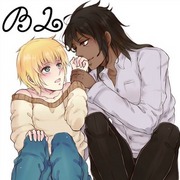
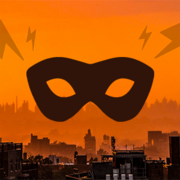
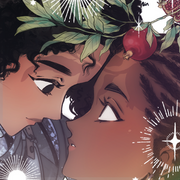
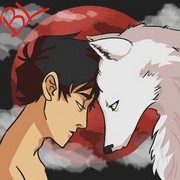



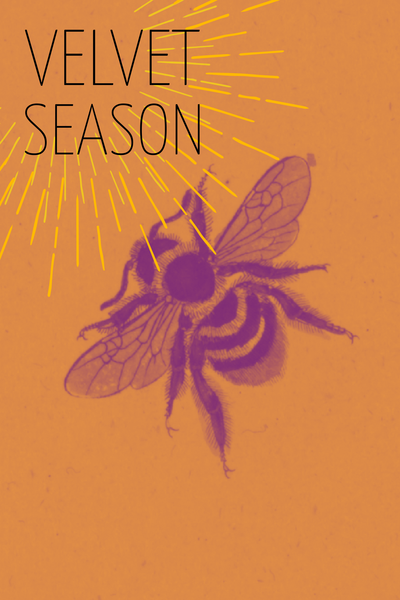
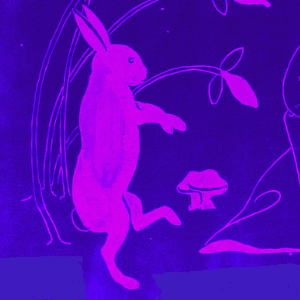
Comments (12)
See all